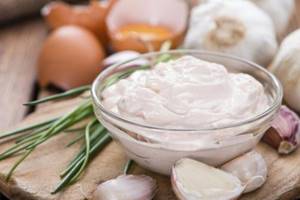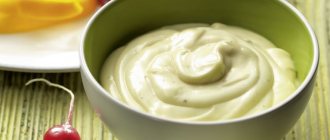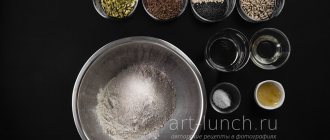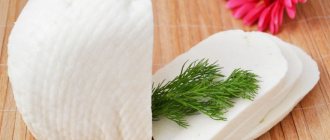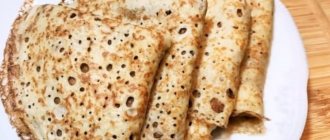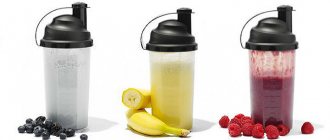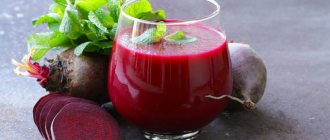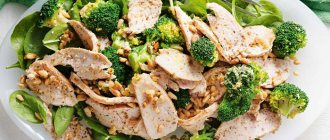Quote from Oksyanya's message
Read in full In your quotation book or community!
Dietary mayonnaise at home.
Dietary mayonnaise at home.
A person’s diet should include only the healthiest foods – there is no room for excessively high-calorie sauces. How to prepare dietary mayonnaise at home, what products can form its basis?
Mayonnaise without oil
A recipe for homemade dietary mayonnaise may well exclude the main source of calories - vegetable oil (100 g of fat contains about 900 kcal). So, to prepare a truly dietary sauce, take a boiled yolk (1 pc.), about 1 tsp. mustard, 100 g liquid cottage cheese.
Mash the yolk, add mustard and mash them well. Then add liquid curd in small portions and beat until completely smooth. Salt and season the sauce to taste.
Reviews
Elena, 33 years old, Kirov: “I often follow various diets and I know that mayonnaise in this case is strictly prohibited, because it is high in calories and contributes to excess weight gain. To prevent the dishes from being bland, I used lemon juice instead of this dressing. It benefits the body by saturating it with vitamins and minerals. You can only store it for 3 days, but that didn’t bother me. I prepared this dressing every day.”
Svetlana, 25 years old, Moscow: “I’m overweight, which I can’t get rid of.
The thing is that I love mayonnaise and can’t give it up. But recently, when the scale showed 120 kg, I decided to give up this product. I went on a diet and seasoned all my dishes only with mustard sauce. It wasn’t tasty, but I endured everything to achieve my goal. As a result, I lost 5 kg in a week and I’m not going to stop there.”
Sour cream mayonnaise
To prepare the sauce, take refined vegetable oil (80 ml) and low-fat sour cream (250 g of this product will be required). To add flavor, use honey (a little), 0.5 tsp. mustard and lemon juice (about 1 tbsp). Also take salt, turmeric, ground pepper and 1 tsp. apple cider vinegar.
Combine sour cream with lemon juice and leave for 15 minutes. Then add seasonings, honey, apple cider vinegar and mustard. While whisking the mixture, pour in the oil in a thin stream. Place the finished sauce in the refrigerator.
What can replace the product?
During a diet, mayonnaise can be replaced with lighter sauces. The homemade dressing you choose should contain a minimum of calories.
Avocado dressing
Avocado sauce can be used instead of mayonnaise if you eat properly. This fruit contains healthy fatty acids Omega 3 and Omega 6, which are the best prevention of vascular diseases, stroke and atherosclerosis. It also contains potassium, iron, copper, vitamins E and group B. Avocado does not contain sugar, which is why the prepared dressing is considered an excellent dietary product.
Mustard sauce
People who are on a diet can season their dishes with mustard sauce. It is easy to prepare and has a delicious aroma. Mustard, which is used to prepare the dressing, contains many vitamins (A, B, C, D, E), antioxidants, glycosides, minerals (iron, phosphorus, potassium, calcium), essential oils, fatty acids, volatile substances and sinigrin (bitterness). , giving the seasoning a specific taste).
This product helps with weight loss, because it accelerates metabolism, improves digestion, as a result of which fats are actively processed, has a mild laxative effect, starts the process of burning fat, effectively accelerating the blood and saturating tissues with oxygen.
Mustard sauce is low in calories and has a low glycemic index. It contains no fat, so it can be added to a large number of diet dishes. It is recommended to store it for no more than 2 weeks. Mustard sauce is best suited for meat dishes.
Natural yogurt
This product is a healthy alternative to mayonnaise. It is recommended to use thick natural yogurt without sugar or preservatives, as it brings great benefits to the body:
- improves food digestion, prevents constipation, reduces the risk of cancer, helps with poisoning;
- lowers cholesterol levels, normalizes blood pressure;
- prevents osteoporosis;
- improves the condition of the genitourinary system;
- stimulates the immune system.
A dressing made from natural yogurt, which replaces mayonnaise, can activate metabolism and promote quick satiety. This sauce is recommended for seasoning fish, seafood, vegetables, and chicken. It complements them well, adding flavor to these products. To prepare it, it is allowed to use dill, cilantro, basil, avocado, fet cheese, and celery.
Sour cream
A good alternative to mayonnaise is sour cream sauce, which can be used to season a large number of dishes. But due to the fact that such a product contains many calories, sour cream dressing is recommended for people who are on a diet and also exercise. The proteins included in this product form the correct muscle relief.
Lemon dressing
Often dishes are seasoned with lemon juice, which is often used instead of mayonnaise. It works well on vegetables, fish and shrimp, but is often used for other dishes. Lemon dressing enhances their taste and adds a piquant sourness. It is stored in the refrigerator for 3 days.
Mayonnaise according to Dukan
To prepare mayonnaise, which can be consumed while following the Dukan diet, take boiled yolks (2 pcs.), 5 drops of lemon juice, 1 tsp. mustard. You will also need cottage cheese and kefir (3 tbsp each). To add flavor to the sauce, use a sweetener, a pinch of salt, and ground pepper.
Process the cottage cheese with a blender until a homogeneous mass is obtained, successively add the mashed yolks, kefir, mustard, lemon juice, pepper, sweetener and salt. Whisk the sauce for 5-10 minutes and then put it in the refrigerator.
Diet mayonnaise is easy to prepare at home. Many of those who have tried the above recipes claim that diet sauce tastes better than industrial mayonnaise.
A little history
As legend has it, mayonnaise was invented at the beginning of the 18th century. on the Mediterranean island of Menorca. The capital of the island of Mahon was captured by the French, but after some time the British began to conquer it. This confrontation between the two peoples lasted a long time. The besieged city was on the verge of famine, because the only food left was eggs and olive oil. Then the French chef decided to use them.
To do this, he ground the eggs with salt, added a small amount of sugar, lemon juice, olive oil and mixed until a homogeneous consistency was formed. Food seasoned with this sauce turned out nutritious and tasty. The French, eating such food, repelled the attacks of the British for a long time and were able to defeat them. The sauce, which indirectly helped the victory, was named “Maonsky” or “mayonnaise” in honor of the city.
By the end of the 18th century. mayonnaise was recognized by all countries and was used to season all cold dishes. Such a gas station was expensive, and its secret was kept strictly secret. A few years later, a French chef named Olivier slightly modified the composition of mayonnaise and added mustard to it, which gave the product a sharp taste and extended its shelf life. This sauce began to be called “Provencal”.
Dietary mayonnaise for diabetics. Is it possible to eat mayonnaise if you have diabetes?
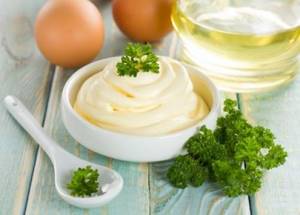
The greatest difficulty at present is the opacity of the mayonnaise manufacturing process itself and the artificial origin of some substances in its composition. And the manufacturers themselves do not strive to reveal all their cards: partly to keep the secret of preparation secret, partly so as not to frighten the buyer by listing obscure additives, such as dyes, stabilizers, preservatives and other things. Responsible companies strive to reduce the mass fraction of such components in their product, emphasizing its naturalness, but this does not have the best effect on the price, while frankly cheap mayonnaises obviously contain more additives that improve the taste, smell and appearance of the sauce. Based on old cookbooks, you can find out with reasonable certainty what mayonnaise was originally made from:
- egg yolk;
- vinegar;
- vegetable oil;
- salt;
- pepper;
- additional ingredients: lemon, mustard, sweeteners.
In Europe, they prefer to add olive oil and a little pureed mustard to mayonnaise, while in more eastern and colder countries they use sunflower oil and mustard oil instead. Based on these basic components, nutritionists analyze the effect of mayonnaise on the human body, since it is simply impossible to assess the impact of hundreds of types of store brands. Established doctors believe that the harm of mayonnaise in diabetes is somewhat overestimated in the sense that it is not it itself that poses the danger, but an imbalance of fats in the diet and excessive calorie consumption, because this product is very fatty and high in calories.
According to research by the Ministry of Agriculture, the greatest threat to health is the calorie content of classic mayonnaise, reaching 700 kcal per 100 grams. product.
The reason lies in the very large amount of vegetable fats contained in the sauce, as well as in egg whites, which is why mayonnaise is almost equal to pure sunflower oil in this indicator. Now, if we remember the restrictions that any diabetic diet imposes on the patient’s diet, we can draw a simple but important conclusion that mayonnaise for diabetes is only possible in very rare cases and in very small portions. This means that people with diabetes should under no circumstances eat any meat with mayonnaise or classic winter salads, like Olivier.
Recipe with beans
Proponents of a healthy lifestyle call this low-calorie sauce pp-mayonnaise (from the phrase “proper nutrition”). We will cook it with beans. What products to take:
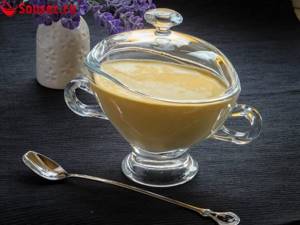
- white beans - 1 cup cooked at home, or 1 can from the store;
- olive oil – 3-4 tablespoons;
- lemon juice – 2 tbsp. spoons;
- mustard – 1 teaspoon;
- salt – 2/3 teaspoon.
Preparation:
- Mash the beans in an immersion blender, making a thick porridge. If you use boiled beans, you can leave some of the broth from them. It is useful for giving mayonnaise a liquid state.
- Add 2 tablespoons of oil and knead again.
- Add mustard and use the blender again.
- Add lemon juice and knead again. If the sauce is too thick, you can add oil, or use bean broth or boiled water.
The taste of this mayonnaise is slightly different from the usual one, but fans of proper nutrition are no strangers to altered flavors of traditional dishes.
Homemade dietary mayonnaise. In a refrigerator
Let's look into the holy of holies of your home - your refrigerator. Despite your individual eating habits, you buy some products anyway. These are milk, bread, sugar, meat and various sauces. The most popular among the latter is mayonnaise. This is the best dressing for traditional Russian dishes, such as Olivier salad, Ukrainian borscht or dumplings. However, with such a sauce you can not only gain weight, but also cause serious harm to your health. This product contains a fabulous amount of calories, fat and simple carbohydrates. In fact, it is a fat bomb, a couple of spoons of which takes away significant portions from a person’s daily calorie intake. Mayonnaise is a product obtained from refined vegetable oil. The energy value is high, but there are no useful components at all. A small spoon will waste all your weight loss efforts. If the product is consumed by children, it can quickly lead to obesity, as well as other diseases. In particular, to vitamin deficiency. Therefore, more and more often, housewives are preparing homemade dietary mayonnaise to pamper their family and offer them a healthy alternative to their favorite product.
Diet mayonnaise at home. Make or buy?
Since the modern housewife has a lot of things to do, it is unlikely that anyone will perform Sisyphean labor without knowing about the expediency of such events. Many more are sure that dietary mayonnaise created at home is not so tasty and it is unknown how it might behave, for example, in “Herring under a fur coat.” Suddenly it will separate or turn out too liquid, which will affect the appetizing appearance. In general, it’s much easier to buy the usual sauce in the supermarket and not worry about anything when guests of honor are on the doorstep.
On the other hand, this may be a discovery for some, but what is offered on the shelves of your favorite supermarkets does not fit in with the concept of “proper nutrition.” After all, the “yummy” contains preservatives, emulsifiers, stabilizers, antioxidants, dyes, and egg and butter substitutes as the main ingredients. Moreover, this cannot be fed to children, and some of them, upon returning from school, while their mother is not looking, instead of the hated borscht, spread a thick layer of the delicacy on bread and gobble it up on both cheeks.
So, taking into account the subtleties of product production, there is only one conclusion: any mayonnaise made at home is dietary. The body will only benefit from it.
